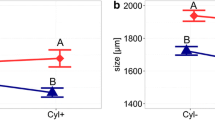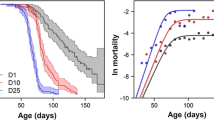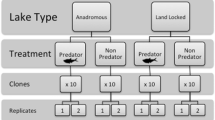Abstract
One-year data on Daphnia and other zooplankton taxa from two neighboring ultra-oligotrophic alpine lakes in the Tatra Mountains, southern Poland, revealed a multi-specific herbivore community of small-bodied cladocerans and rotifers in the lake that has contained fish for millennia, and the large-bodied Daphnia pulicaria as the sole herbivore species monopolizing resources in the absence of fish in the other lake, which has never been successfully stocked . D. pulicaria co-exists with an abundant Cyclops population. In contrast to the non-abundant small-bodied D. longispina, which reproduces year-round in the lake with fish, D. pulicaria in the fishless lake was found to reproduce only once a year over a short period of time, suggesting strong stabilizing selection for the precise timing of reproductive effort and hatching from diapausing eggs in the clones inhabiting the lake. This is conceivably due to the exceptionally long lifespan of Daphnia, which can over-winter either in ephippia or in the form of active adults that have restrained from reproduction until the next year, when, almost 1 year old, they produce eggs. The new-year generation starts from both the ephippial eggs and eggs released by the over-wintering adults. Only a small fraction of the population is recruited as the second new-year generation from eggs released by a few new-generation females that succeed in growing and maturing early. In each of the two generations, reproductive effort is restricted to a short period, evidently the only time window when (1) food levels are high enough to allow juvenile growth and (2) predation by Cyclops is low enough for high survival of eggs and neonates. No immediately hatching eggs are produced outside this reproductive window, even when the body lipids of the adult Daphnia are as high as at the time of summer reproduction, suggesting a deliberate halt to reproduction and its postponement until the following summer.
Similar content being viewed by others
Author information
Authors and Affiliations
Additional information
Electronic Publication
Rights and permissions
About this article
Cite this article
Gliwicz, M.Z., Slusarczyk, A. & Slusarczyk, M. Life history synchronization in a long-lifespan single-cohort Daphnia population in a fishless alpine lake. Oecologia 128, 368–378 (2001). https://doi.org/10.1007/s004420100673
Received:
Accepted:
Published:
Issue Date:
DOI: https://doi.org/10.1007/s004420100673




